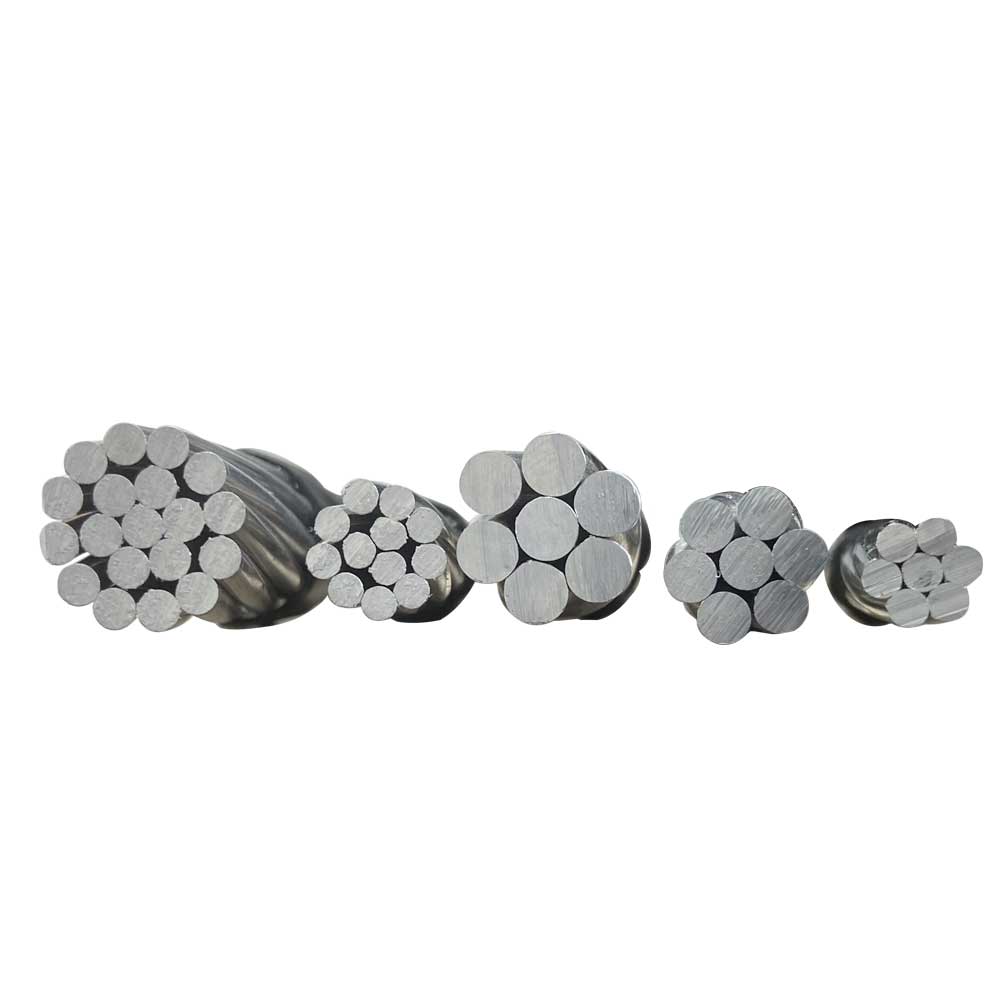If you’re new to the world of cables, you might be wondering: what is AAAC cable? In this article, we’ll break down the differences between AAC (All-Aluminium Conductor) and AAAC (Aluminium Alloy Conductor). AAC is a refined Aluminium stranded conductor with a minimum metal purity of 99.7%, making it a highly corrosion-resistant material. Because of its high resistance to environmental factors, it’s extensively used in metro and railway applications. AAAC, on the other hand, is a bare-conductor cable with a higher mechanical resistance and better corrosion resistance than ACSR, as well as superior strength-to-weight ratio.
AAAC is an acronym for aluminium conductor steel-reinforcement. It is widely used in the power industry and transmission lines. Its unique structure uses a single layer of aluminum wire reinforced with special processing. This conductor is capable of acting as a means for several lines. The central steel core provides additional mechanical strength, which reduces the sag in the aluminium conductor.
The outer strands of AAAC cable are made from aluminium alloys of 1350-H19 or 1370-H19. Both alloys contain at least 99.5 percent aluminium. The suffix indicates the temper of the aluminium. The H19 alloy is extra-hard. The steel strands used in the conductor core are normally galvanized or coated with another material.

Another common type of cable is AAAC. This is an aluminium-magnesium-silicon alloy. The alloy contains magnesium silicide for improved mechanical strength. The alloy is also lighter than ACSR, which is why it is preferred in areas of high corrosion and conductivity. However, the alloy does not have the steel core of ACSR. However, it does offer higher electrical conductivity than its steel-reinforced counterpart.
AAAC cable is another high-strength stranded cable. ACSR is typically used in overhead power lines. It is chosen for its excellent conductivity, low weight, and low cost. The steel core strand is designed to provide strength and flexibility without stretching the aluminum due to its high ductility. This makes AAAC cable a highly efficient choice for high-speed electrical lines.
Aluminum strands can suffer from fretting due to relative frictional forces, which can cause a cable to break while in service. The surface of the aluminium conductor is shaped like a ‘figure-eight’, and it is therefore important to consider its bending amplitude before installing any cable. However, the resulting cracking can lead to a catastrophic failure of the power line.
The type of splice used in AAAC cables is also critical. The splice is designed to run cooler than the conductor, lowering the temperature. The larger cross-sectional area results in lower electrical resistance. This allows heat to dissipate faster. Failure of the splice is not always fatal, but a broken splice could cause the failure of a large amount of electrical load. The splice’s insulating and conducting grease can affect the strength and conductivity of the cable.
All aluminium conductor
AAAC cables have one or more strands of aluminium wire for each conductor. In a typical installation, the cable will be exposed to temperatures from minus 50 to +80 deg C. Depending on the environment, AAAC cable can withstand up to two-and-a-half times its rated current. The conductor itself is made of strands of aluminium. This material is incredibly durable and is ideal for use in harsh, high-temperature conditions.
AAC is a type of aluminium-alloy stranded conductor with a minimum metal purity of 99.7%. This type of cable has high corrosion resistance and is widely used in the metro and railway industries. This type of cable is more expensive than ACSR but has many advantages over it. It has better sag resistance, better tensile strength and is available in a variety of different constructions.
AAAC is an aluminium-magnesium-silicon alloy with high electrical conductivity. It contains magnesium silicide to improve its mechanical properties and improves the strength to weight ratio. It lacks a steel core, making it a great choice for primary and secondary distribution. It has excellent corrosion resistance and good strength-to-weight ratio. It is lightweight and sag-resistant. This material is also excellent for outdoor applications.
AACSR and ACSR-AW are similar DC resistance at 20°C. However, ACSR-AW has higher ampacity and resistance to abrasion than ACSR. AACSR is often used as primary distribution cable and overhead transmission cables. It has high strength-to-weight ratio and is used in harsh environments. In addition to its low DC resistance, it is also a highly insulator.
AAAC alloys have improved mechanical properties. Its heat-treatable design improves mechanical properties. The conductors have lower conductivity than pure aluminium. AAAC alloys also have lower breaking loads than ACSR. As a result, AAAC cables have lower breaking loads. Aeolian vibration is greatly reduced in buildings. These cables are lighter and easier to install than ACSR. A few disadvantages include increased installation and stringing costs and the need for specialized hardware.
All aluminium alloy conductor
The AAAC is an all-aluminum alloy conductor that is commonly used in bare overhead distribution cables. This high-strength conductor offers superior sag and strength-to-weight ratios and has a lower emissivity than ACSR. Its aluminium alloy conductors also resist corrosion better than ACSR. Its benefits over ACSR include lower breaking loads and increased durability.
All-aluminum-alloy-silicon conductors are lightweight, supple, and exhibit excellent electrical and mechanical properties. AAAC cable conductors typically are made from aluminium alloy 6201, which offers superior sag-tension characteristics, strength-to-weight ratio, and corrosion resistance. The AAAC is gaining widespread acceptance for medium and high-voltage transmission lines because of its low cost and lower electrical loss, and it is compatible with a wider range of voltage levels and power distribution systems.
AAAC is made of an aluminum alloy that is concentric-lay stranded. These cables are ideal for laying across special geographical features such as mountains, lakes, and rivers. Since the AAAC conductor has no steel core, it exhibits higher strength-to-weight ratio than ACSR and is more resistant to corrosion than ACSR. For this reason, it is increasingly used in metropolitan areas and in the railway and metro industries.

